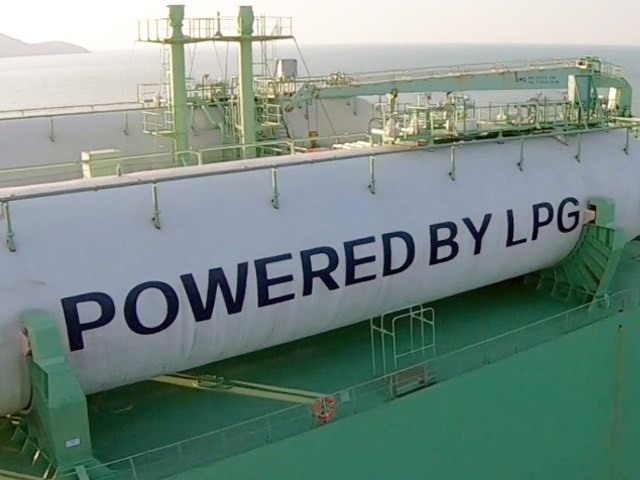BW LPG, the world’s largest owner and operator of very large liquified petroleum gas (LPG) carriers, is approaching a major milestone in the retrofit of a number of its very large gas carrier (VLGC) to run on LPG instead of Heavy Fuel Oil (HFO).
About 20 months ago, BW LPG signed a contract with Wärtsilä to install LPG Fuel Supply Systems (LFSS) on four of its vessels. As part of the contract, Wärtsilä was also asked to manage the integration of the new system into the vessels. This meant making necessary ship design modifications, integrating the LFSS control system with the ships’ integrated automation system (IAS), and acting as a coordinator between the yard, the engine manufacturer, and the owner.
Now, after the successful completion of full-scale testing and installation of the systems, the first BW vessel has successfully completed sea and gas trials and is on a historic transpacific voyage from China to Enterprise Port in Houston, Texas, on full LPG propulsion.
Serge Schwalenstocker, Project Manager, BW LPG, says the decision to make the switch from running vessels on Heavy Fuel Oil to LPG made sense from the economic, operational, and especially environmental perspective.
Wärtsilä is not alone in its pioneering work on the use of LPG as a marine fuel. There is broad interest in the fuel. The classification agency DNV GL is reported to have developed new class rules and a class notation for the use of gas-fuelled LPG ships. According to reports, a joint study by DNV GL and MAN found “LPG is at least as attractive an energy source as LNG, with shorter payback periods, lower investment costs and lower sensitivity to fuel price scenarios.”
So far, LPG as a marine fuel has only been tried on LPG carriers. But experts believe that with costs declining and the availability and accessibility of LPG rising, it is only a matter of time before many more vessels adopt it.
Source:
https://cyprusshippingnews.com
